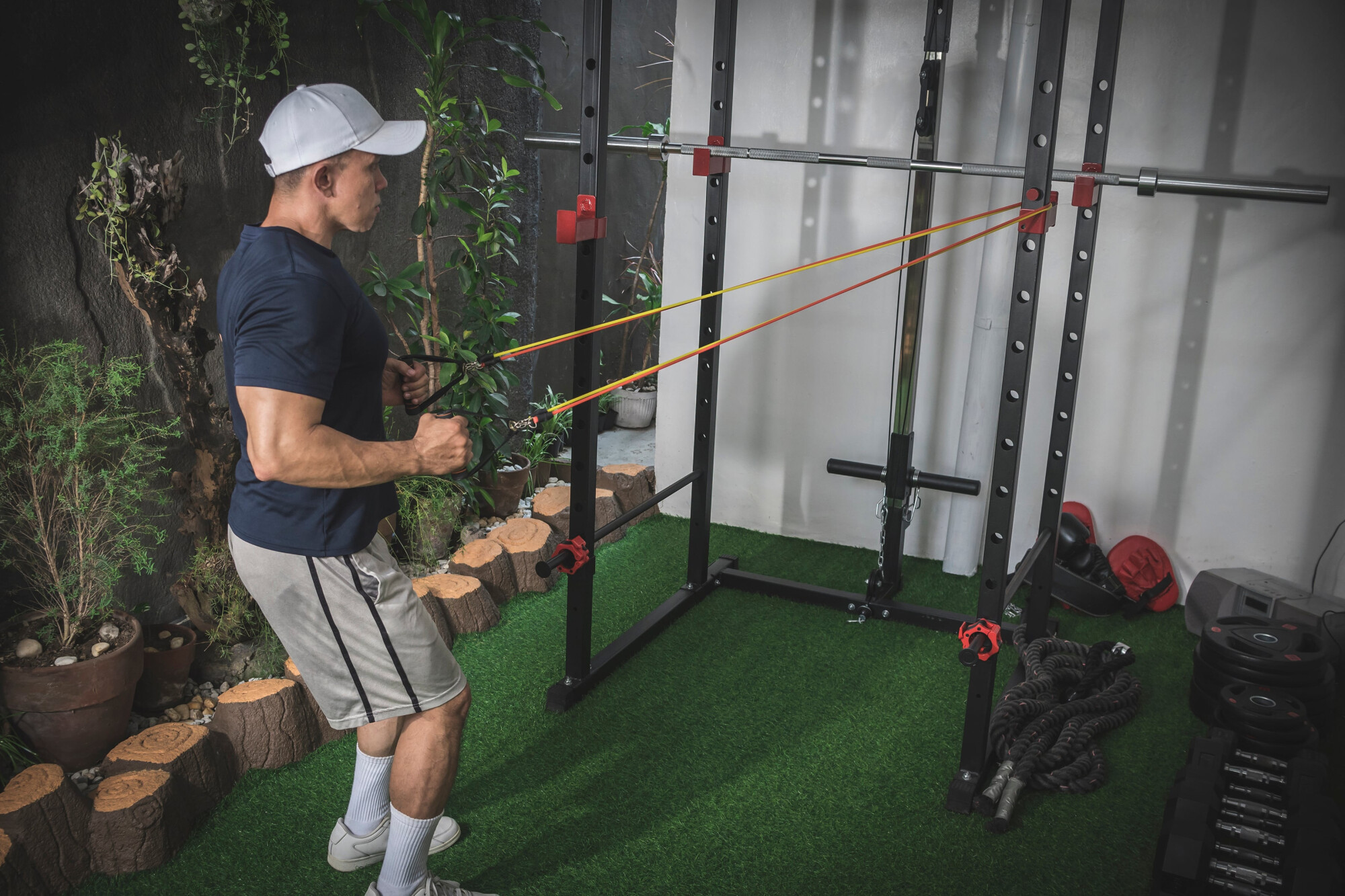


03 Dec 2024
Share
Urban living often means busy schedules, and after a long day at work, there's little time or energy left for the gym. Training your back muscles at home can be an excellent alternative! Not only does it improve physical health, posture, and strength, but it also saves time, making it perfect for busy professionals. The back muscles are the largest muscle group in the body. This article will introduce the back muscles and the benefits of training them. JC Fit City has also compiled some home back muscle exercises and proper training techniques that even beginners can master!

For fitness beginners, it's best to start with the main muscle groups. Training your back muscles can effectively improve overall physique. The back consists of several muscle groups, each with its specific function and location:
Trapezius Muscle: Located in the upper back, responsible for lifting and rotating the shoulder blades, protecting the neck.
Latissimus Dorsi Muscle: Covers the lower back, mainly responsible for arm adduction, rotation, and extension.
Erector Spinae Muscles: Run along the spine, helping maintain spinal stability and extension.
Rhomboid Muscles: Located between the shoulder blades, responsible for retracting and stabilizing the shoulder blades.
Long hours of sitting in the office can lead to poor posture, such as hunchback, rounded shoulders, and forward head posture. Severe cases can cause shoulder, neck, and back pain. Training your back muscles can correct poor posture, improving body alignment for a more elegant silhouette. Back muscle training also enhances core strength, making lifting and carrying objects easier. Additionally, the spine is the body's main support structure. A stable spine allows for various movements and postures. Strong back muscles protect the spine, reducing the risk of exercise injuries.

To avoid injuries, ensure proper form for each exercise. Warm up and stretch adequately before training to prevent muscle strain. When using dumbbells for back exercises, hold the dumbbells correctly: do not grip too tightly with your palms; use four fingers to loosely grip the outer side of the dumbbells, with the thumbs wrapped around the inner side to ensure they don't slip. Also, lock your wrists to avoid straining them during exercises.

Lie on your back with your knees bent, lift your hips and pelvis while keeping your shoulders on the ground, hold for 2-3 seconds, then return to the starting position. This exercise strengthens the lower back and glutes.

2.Superman:
Lie face down with arms extended forward and palms facing down, legs straight. Lift all limbs simultaneously, holding for 2-3 seconds. This exercise trains the entire back.

Towel Exercises
3.Reacher Row:
Lie face down with legs extended and raised, holding a towel and lifting it while pulling arms back. This exercise strengthens the latissimus dorsi.
4.Towel Pulldown:
Hold a towel with hands slightly wider than shoulder-width, arms extended overhead, then pull down to the back of the neck. This strengthens the trapezius and rhomboids.
5.Kneeling Rear Raise:
Kneel down, lean forward, holding a towel behind, and lift your arms to the highest point. Lift only to a comfortable height to avoid muscle strain.
Resistance Band Exercises
6.Bent Over Row:
Step on the resistance band, lean forward while keeping your back straight, hold the band ends and pull towards your abdomen, elbows pulled behind, holding for 2-3 seconds. This exercises the latissimus dorsi.

7.Standing Reverse Fly:
Stand with feet shoulder-width apart, hold the band ends, lift your arms to the sides while exhaling, and return them to the starting position while inhaling. This strengthens the muscles between the shoulder blades.

8.Straight Arm Pulldown:
Tie the band at a height you can reach with extended arms, hold the band, and pull it straight down. This effectively trains the latissimus dorsi.

Dumbbell Exercises
9.Dumbbell Row:
Beginners should start with dumbbells weighing about 10% of their body weight (e.g., a 60kg person can use 6kg dumbbells). Bend knees slightly, lean forward, and hold the dumbbells, lifting them with elbows driven by the shoulder blades. Repeat 8-12 times to strengthen the entire back.

10.Single Arm Dumbbell Row:
Rest your left hand and knee on a bench, hold the dumbbell with your right hand, and lift it using your elbow driven by the shoulder blade. Repeat 8-12 times before switching sides. This focuses attention on one side's muscles.

11.Dumbbell Lateral Raise:
Beginners can choose dumbbells that are 5% of their body weight. Stand with knees slightly bent, upper body slightly leaning forward. Extend the dumbbells outward using your elbows and lift until they are nearly parallel with your shoulders, then slowly lower the dumbbells. This exercise can strengthen the shoulders and back muscles.

To effectively train your back muscles, consistency is key! Training at home can save more time, and regular weekly back training can achieve better results. Continuous back muscle training not only improves body quality but also protects the spine, corrects poor posture, and alleviates various body pains. However, maintaining the correct posture is very important in any exercise. If you're unsure whether your body condition can handle the above training, it is recommended to consult a family doctor or professional. Training back muscles at home is not difficult; you can even complete related exercises with a towel. JC Fit City encourages fitness beginners to start back muscle training at home!